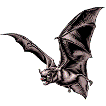Museum, University of Nebraska State

University of Nebraska State Museum: Mammalogy Papers
Document Type
Article
Date of this Version
March 1981
Abstract
I suspect many people do not know what natural history museums are all about. These museums hold nature's works of art, instead of just man's. There are not many museums of natural history and those few are usually in big cities.
Field Museum of National History in Chicago is one of the largest in the world, along with the British Museum of Natural History in London, the Smithsonian (U.S. National Museum) in Washington, and the American Museum of Natural History in New York. These are the museums that have the actual skeletons of dinosaurs, or stuffed elephants, poised in combat, exhibited in impressive halls. Many of the specimens were collected early in the century during a time of large field expeditions and adventurous wealthy men. Today those adventurous wealthy types are probably still around, but the big expeditions carry cameras rather than guns. The large animals are hard to come by in the wild, either because there are not many left or because there are too many restrictions in getting them. Fortunately for us and our children and grandchildren, places like Field Museum have carefully preserved these big beasts, and often in a setting that looks like their native habitat.
But the numbers of animals and other natural history objects on exhibit are only a small fraction of the holdings of natural history museums. In the places closed to the public are thousands - millions - of specimens carefully stored in airtight, mothproof cases or tanks and jars. There are mammals, snakes, insects, snails, birds, plants, rocks, fossils and artifacts, named and catalogued and waiting for competent scientists to study them.


Comments
Published in the R-MWC Alumnae Bulletin 74:3 (Spring 1981), pp. 10–11. Copyright © 1981 by the Alumnae Association, Randolph-Macon Woman’s College, Lynchburg, Virginia.